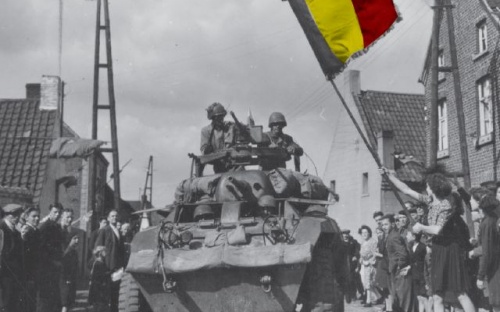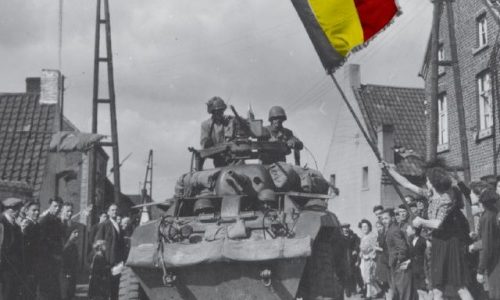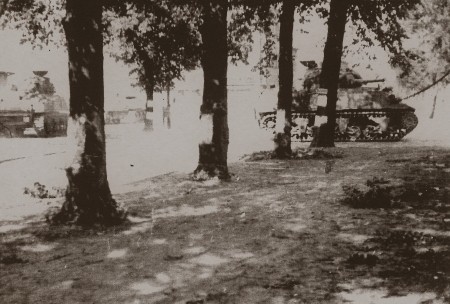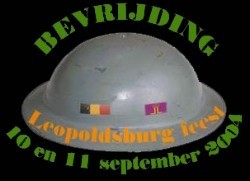Some passages of a text by Omèr Gelaesen (translation by Patrick Marquenie)
On June 6 1944 the long-awaited day started: the start of the liberation of Europe. That morning, In France, some tens of thoudsand soldiers stormed from their boat through the chilly seawater onto the beaches of Normandy.
In Felemish villages, liberators from all over the world were falling in battle. One of them was the brother in law of Kennedy, who would later become president of the United States of America. He was killed while he was leading his company from Beverlo to Heppen. All liberators got a very quick burial, but most of them were later transported to the British War Cemetary of Leopoldsburg. In the vicinity of Leopoldsburg the soldiers of the Brigade Piron were brought into action. On September 11 and 12 they lost 6 men. On several places civilians weren’t spared: not only the ‘ordinary’ victims of war, but also several dozens of civilians were killed due to gruesome deeds of the Nazis.
A bridge over the Schelde-Maas canal, between Lommel and Neerpelt, was conquered, thanks to quick action of the British Guides. While run over Germans were still fighting on other places, this bridge had to be defended from the Germans for several days. But she could be held and she would become world-famous a few days later.
|
|
|
In the first half of September, the Generals had worked out a daring plan to end the war fast. It was their intention to break the German resistance by occupying all bridges over the big rivers in Holland by using paratroopers and isolate the German army from their homeland. This would be done on the axis Eindhoven -Nijmegen – Arnhem. Because the paratroopers couldn’t take a lot of heavy weapons and muntions with them, they would have to apply as soon as possible at the tanks and supplies. This would become the mission of the troops fighting in the ‘Limburgse Kempen’. The plan got the name MARKET-GARDEN, in which MARKET stood for the airborne part and GARDEN for the ground part. In England American, British and Polish paratroopers were prepared for action. The plan for the groundforces was explained to the commanders of the fighting units in a cinema in Leopoldsburg on September 16. It only knew a partial success. The landing was very difficult for the paratroopers and the march by road became a very heavy duty. The Germans were fighting very hard and it costed lots of days before the paratroopers could be reached. For the bridge of Arnhem, which was the furthest away, all help came too late: the paratroopers were defeated. Due to the course of this operation, the codename was somehow forgotten. Very quickly it was replaced by the concept ‘A bridge too far’ and the road that led there, through the ‘Limburgse Kempen’.
This article is also available in
![]() Nederlands
Nederlands



